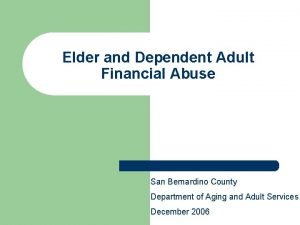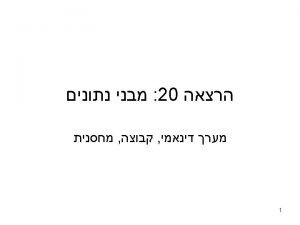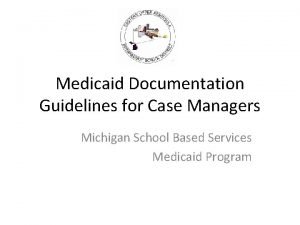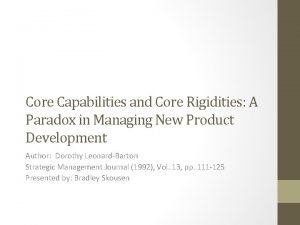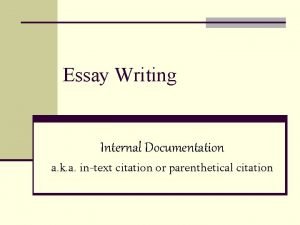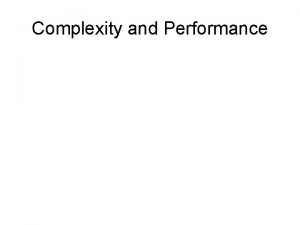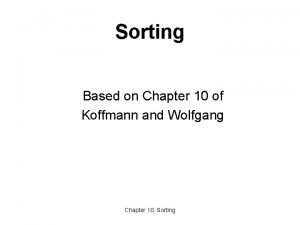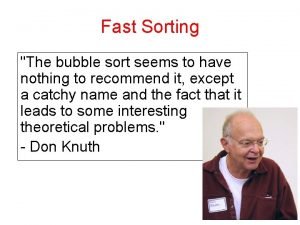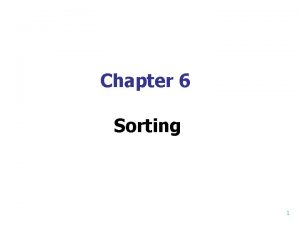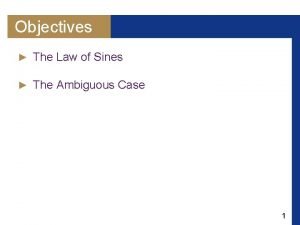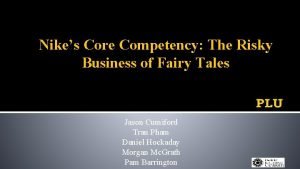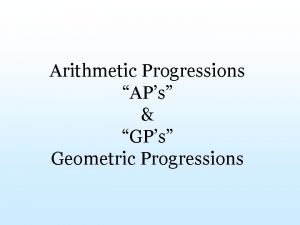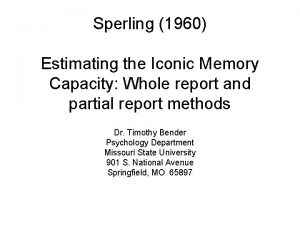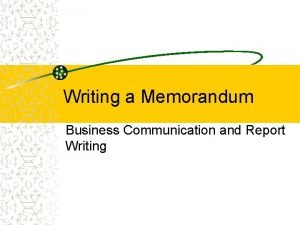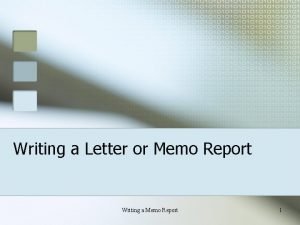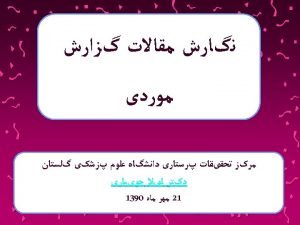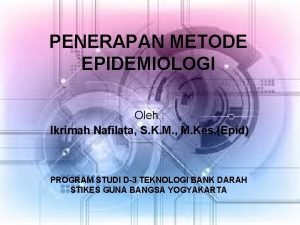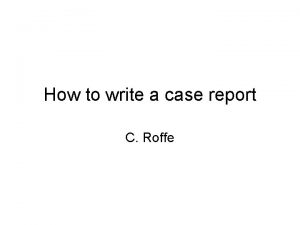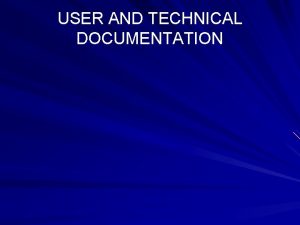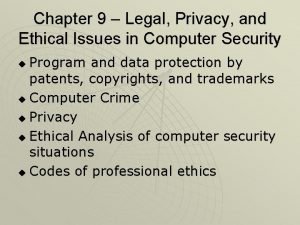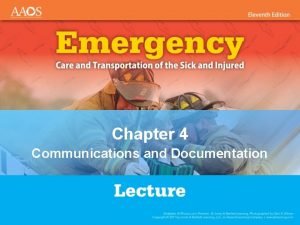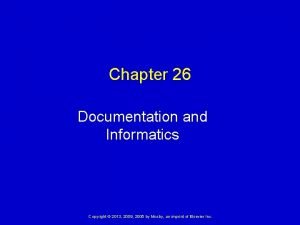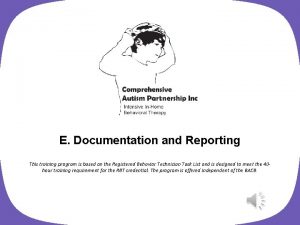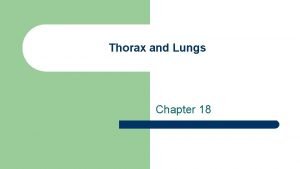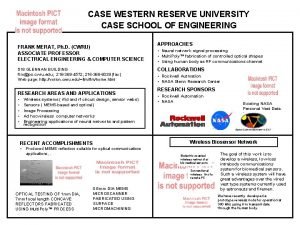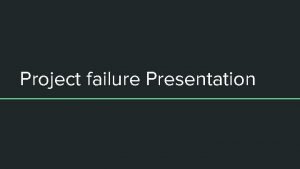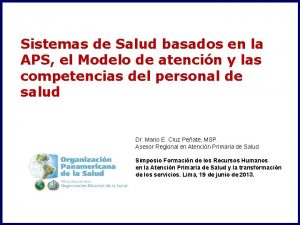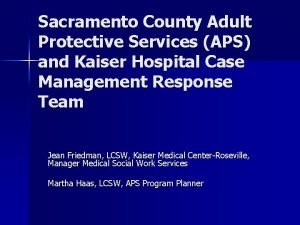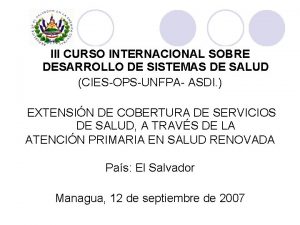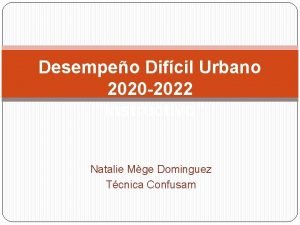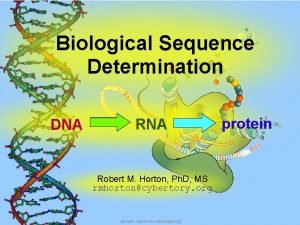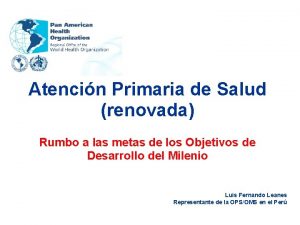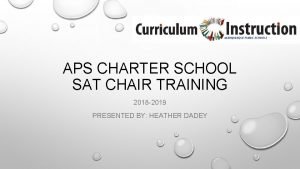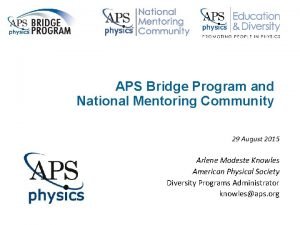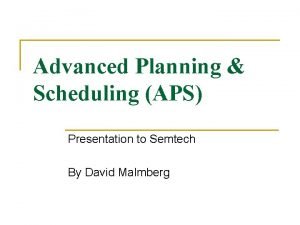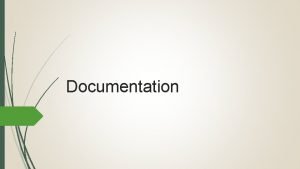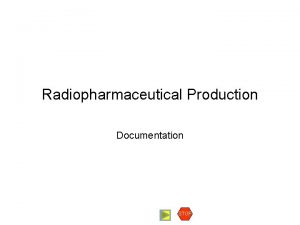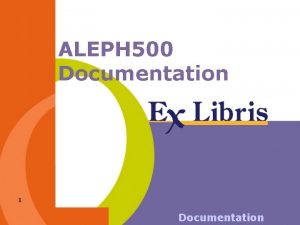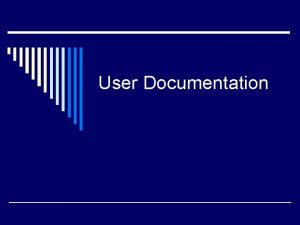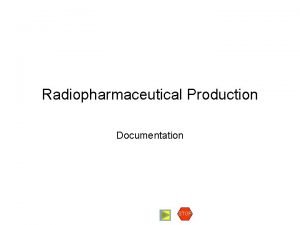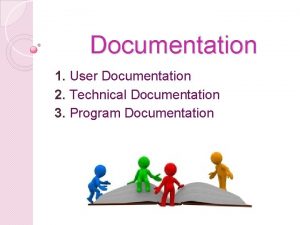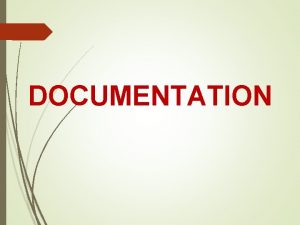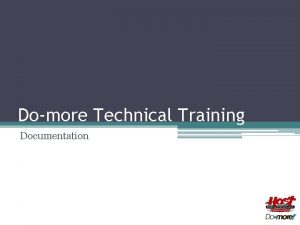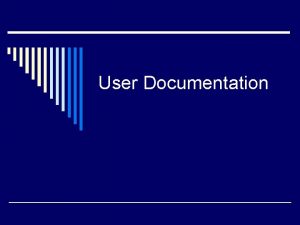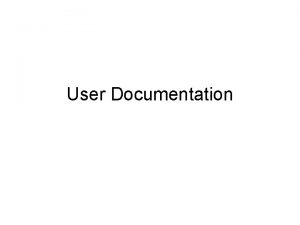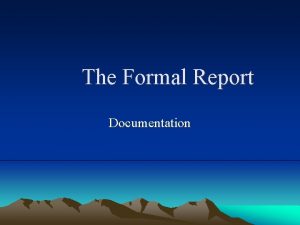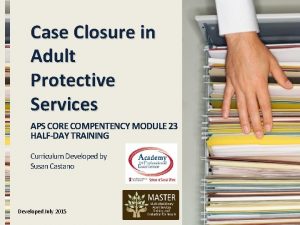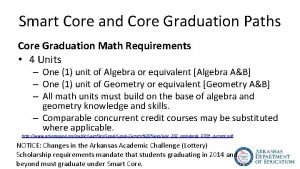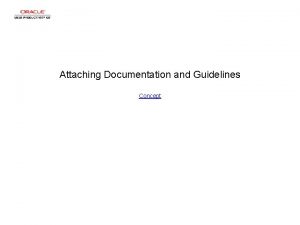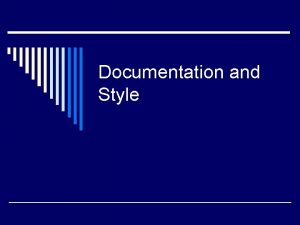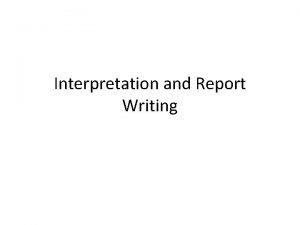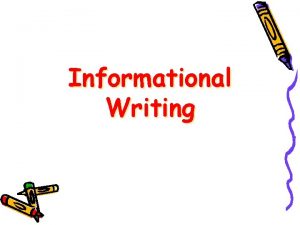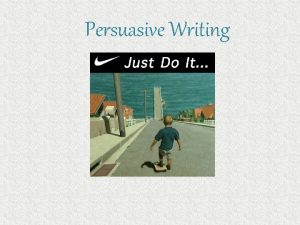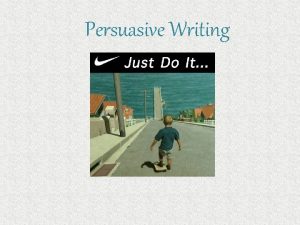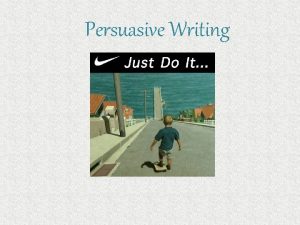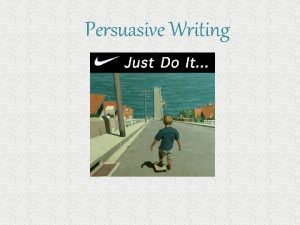APS Case Documentation and Report Writing APS Core












































- Slides: 44

APS Case Documentation and Report Writing APS Core Competencies Module 15 Developed by Susan Castano, LCSW Version 2 - Revised June 2015

How we got here… • Goal: Standardized Core Curriculum for APS workers • 23 APS Core Modules offered as in-person & e. Learning http: //theacademy. sdsu. edu/programs/master/corecurriculum/ • Partners in this effort – CDSS, Regional Training Academies, Cal. SWEC, NAPSA, IHSS Training Academy • Impact of project: National APS Training Partnership • California • National - NAPSA

Housekeeping and Introductions • Schedule for the day • CEU instructions • Location of restrooms • Set cell phones to vibrate • Introductions

Evaluation Process Transfer of Learning Activity Satisfaction Survey Embedded Evaluation

Developing an ID Code • What are the first three letters of your mother’s maiden name? Alice Smith • What are the first three letters of your mother’s first name? Alice Smith • What are the numerals for the DAY you were born? Nov 29 th Trainee ID Code: S M I A L I 2 9

Learning Objectives • Describe the purpose of accurate, complete and timely documentation. • Demonstrate the use of clear, concise, and objective language. • Identify four types of equipment and their uses. • Discuss the importance of accurate recall and identify at least three memory improvement techniques. • Discuss confidentiality as it relates to documentation. • Discuss documentation needed for court including statements, evidence, and language. • Analyze and rewrite an APS report.

“Discharge status: Alive but without permission. ”

Question #1 What I like or dislike about writing?

APS Case Documentation Framework “The test of a good APS Case Record is when any reasonable and prudent person can read and review the record and draw his/her own conclusion as to what occurred, based on interview statements and supportive evidence. ” - CWDA APS Guidelines to Supplement Regulations, 2. 7: Guiding Principles for APS Case Documentation

Policy and Practice in California • APS Case Record Requirements • CA Welfare & Institutions Code 15630 -15632 • CDSS Manual of Policies & Procedures 33 -805 • Handout #1 • Guiding Principles for APS Case Documentation • CA APS Standards for Consistency in Case Documentation 2015

What is the purpose of documentation?

Purpose of Documentation • Detailed and reliable case history, baseline data • Evidence for involvement – APS and/or legal • Accountability and liability • Professionalism • Consistency • Justification for staff and funding for program • Other?

The bottom line… • You are in this “business” to help and protect vulnerable people • To do this, you must build relationships AND build a case • To build an effective case, you must document • Documentation is an integral part of the helping relationship

Things to consider… • Who will read it? • Where will it end up? • How long will it take? • Who benefits?

Standards for Documentation Accurate/ Factual Complete Timely

Accurate • Dates & Time • Visit, phone call, contact, referrals • Names , relationships, titles, ranks • Family, significant others, medical, law enforcement • Language • Word usage • Spelling • Issues with “spell check”

Case Documentation Sample 5/15/08 – Initial Assessment/Home Visit Conducted visit at hospital. Client’s daughter, M, was with client when SW arrived. Client is being treated for a heel ulcer and she reportedly had an operation yesterday. SW attempted to speak with client but she did not respond. Client was curled-up in the fetal position. She reportedly has pulled out her IV, so something is wrapped on both her hands to keep this from happening. Daughter also reported brother medicated client’s sores with over the counter medication after consulting with her primary physician. Primary physician reportedly told brother that he can’t treat something he hasn’t seen. Daughter indicated that son was being stubborn an insisted on treating sores himself.

Complete: Included/ Not Included Required Forms Progress Notes Medical Information Legal Information Financial Information Personal Notes Alterations Irrelevant Info Judgmental/Inflammatory Statements

Timely • Date and time all entries as soon as possible • • Home visits Visits to other locations Office visits Phone calls Emails Photos Audiotapes/Videos • Add all entries/case activities as soon as possible • Identify where photos and audiotapes were recorded

Essential Elements of Effective Documentation • Restricted to or based on fact. Objective • Expressing or dealing with facts or conditions as perceived without distortion by personal feelings, prejudices, or interpretations. Concise • Marked by brevity of expression or statement. • Free from all elaboration and superfluous detail. Source: Merriam-Webster Online Dictionary Clear & Factual

Just the facts… • Direct and systematic observations • What you saw, heard, smelled • Information obtained by other professionals • Medical diagnosis and prognosis • Bank statements • Legal documents • Direct quotes • Clear language • Understood by any reader • Acronyms and lingo beware

Activity – Handout #4

Activity – Handout #4 Read the following narrative information carefully: The worker walked into the kitchen and observed rats scurrying under the cabinets when the light was turned on. Feces were all over the floor. The client’s daughter said her mother liked rats but she didn’t like people. Mrs. Jones said she was surprised that the rats stayed around with so little food in the house, then she walked out of the room.

T T T T T F F F F F Q Q Q Q Q 1. Rat feces covered the kitchen floor. 2. The client’s daughter didn’t provide her mother with enough food. 3. It was reported that the client liked people. 4. The worker turned on the kitchen light. 5. Mrs. Jones liked rats. 6. Someone turned on a light. 7. Mrs. Jones doesn’t like people. 8. There was not very much food in the kitchen. 9. The client is ambulatory. 10. Mrs. Jones went to another room after she talked to the worker. 11. Rats went under the cabinets when the light was turned on. 12. The worker interviewed the client and her daughter. 13. The client’s house was not very clean. 14. The worker walked into the kitchen. 15. The age of the client was not revealed in this part of the narrative. 16. Mrs. Jones was hungry. 17. The narrative mentions three people: the worker, the client, and the client’s daughter.

Video Observation Activity – Handout #5 • “Going Home”

Subjective vs. Objective Descriptions Subjective • Gives an interpretation of an observation. Two people seeing the same event might be likely to give different subjective descriptions. Objective • Tells what was observed. Two people observing the same thing would probably give very similar objective descriptions.

“The kitchen smelled like it had not been clean for a month. ” Or “When I entered the home, I smelled a foul odor. On entering the kitchen, I saw what appeared to be spoiled meat in the kitchen sink. The meat had turned pale green. ” • Be aware of your own values • What pushes your buttons? • Watch your language • No judgmental, inflammatory, loaded words • Use words like “seems” and “appears” • Describe what led you to that conclusion

Objective Writing Activity – Handout #7 It’s time to practice objective writing! This activity has two parts: • First identify why the statement given is NOT objective (is it judgmental or inflammatory? ). • Then rewrite the description using clear, objective, and descriptive language.

Concise • Get to the point • Answer: who, what, where, when, why, and how • Avoid unnecessary and extraneous words • Make sure info is relevant to the case

Case Record Diet Activity– Handout #8 Cut out excess! Leave in essential nutrients. • Reduce/edit the following case documentation entry making sure it is clear, objective and complete. • Cross-out non-relevant information and make additions (if necessary) making sure only the most pertinent information is included. • Good review resource - CA APS Standards for Consistency in Case Documentation - Response to Reports: Investigation

Memory Exercise Now it’s time for a post-lunch brain energizer! • Step 1 – Take one minute to view items under the blanket – you may not use paper or pencil. • Step 2 – Return to your seats and list everything you saw.

Memory Improvement Tricks • Brain Exercises • General Guidelines (Handout #9) • Mnemonics: Memory Tools (Handout #10) • Imagination • Association • Location • Healthy Habits • • • Exercise Manage stress Get enough rest Eat right Do not smoke

Documentation Equipment • “Smart” Devices (phones, tablets) • Computers • Camera (Handout #11) • Audio/Video • Body maps (Handout #12) Remember to obtain permission from the client before photographing, audio or videotaping

Ethical Issues – Handout #13 • Liability : myths and realities • Inflation/Deflation/Omission • Whose life is it anyway?

Confidentiality as Related to Documentation • Confidentiality in the law • Handout #14 • APS CA Cross-Reporting & Referral Guide 2014 • CA APS Standards for Consistency in Case Documentation - Response to Reports: Reporting Party • With whom can you share documentation? • Who needs to have what? • Special concerns

How Can APS Reports be Used? • To seek restraining or protective orders • Part of arrest warrant • To set bail • To establish elements of probable cause • To establish a basis for client capacity evaluation which may result in appointment of a conservator/guardian

Writing for Court: Rules of Evidence • Admissible Evidence Criteria • Relevant: proves or disproves a disputed fact • Competent: legally obtained and receivable in court • Exclusion of Evidence: Reasons • • Reduce violations of constitutional protections Avoid undue prejudice Prohibit unreliable evidence (e. g. hearsay) Protect valued interests and relationships (e. g. attorney-client privilege)

Victim/Witness Statements • Document when statement was made and situation under which statement was made • Excited Utterances/Spontaneous Statements – valuable form of evidence • Strengthen veracity of statements • Witnessed by coworker • Documentation taken at the time statement provided • Documentation • Timely • Accurate • Dated

Language for Court Reports DO: AVOID: * Use “victim states” rather than “victim alleges” * Build case on fact not opinion * Write in a way that can refresh your memory and bring you back to the situation * The word “story” * Labeling : no opinions or biased language

Mrs. Gunther Activity Mrs. Gunther is a 78 year old woman whose son, Dave, hit her in the face with the telephone when she threatened to call the police on him. He had been threatening her with violence if she did not give him her car keys. Because Dave was drunk, Mrs. Gunther did not want him to drive. You are the APS worker called to interview Mrs. Gunther and you were first on the scene with the police. The police have now arrested Dave Gunther and you know that you may have to testify in court.

Conservatorship Standards • APS often first rung of investigation • Clear and convincing evidence: standard of proof • Legal terms: lack capacity to make and communicate informed decisions about health, safety and welfare • Attributes of mental capacity • • • Receive, comprehend, and relate relevant information Express choice consistently Appreciate the nature of their condition Balance risks, benefits, and burdens of choices Communicate rational choices

Conservatorship: Essential Elements to Document • Inability to manage finances and/or health care due to medical condition (such as irreversible dementia) • Assets/income can’t be managed without legal arrangement • No legal arrangement in place • Unwilling, unavailable, or unsuitable legal arrangement in place • Unsafe environment that poses a clear and present danger • Adult refuses or is unable to consent to be moved • No legal arrangement is in place • Resources: • Handout #15 – GC-335 Capacity Declaration • Sample: APS Probate Conservatorship Referral Packet • CA APS Standards for Consistency in Case Documentation Assessment Capacity Issues

APS Report Activity – Handout #16 • Read background information and documentation sample. • Edit, amend, rewrite the report which will be submitted to the Public Guardian’s Office to support a probate conservatorship referral. • The documentation needs to explain why the client needs a conservator and who the recommended conservator should be and why. • Make sure the report is clear, objective and concise.

Questions & Evaluations • Questions? • Comments? • Please complete you evaluations Thank you for your hard work!
 Aps san bernardino county
Aps san bernardino county Best case worst case average case
Best case worst case average case Case management documentation
Case management documentation The brittle, rocky outer layer of earth
The brittle, rocky outer layer of earth The crust the mantle and the core
The crust the mantle and the core Core capabilities and core rigidities
Core capabilities and core rigidities Internal documentation in writing
Internal documentation in writing Basic layers of the earth
Basic layers of the earth Status progress report
Status progress report Short case vs long case
Short case vs long case Linear search big o notation
Linear search big o notation Bubble sort best case and worst case
Bubble sort best case and worst case Bubble sort best case and worst case
Bubble sort best case and worst case Bubble sort best case and worst case
Bubble sort best case and worst case Ambiguous case trig
Ambiguous case trig Core competencies nike
Core competencies nike Aps and gps
Aps and gps Partial report technique
Partial report technique What is memorandum in business communication
What is memorandum in business communication Report writing notes
Report writing notes Report writing letter
Report writing letter Allergic conjunctivitis case report
Allergic conjunctivitis case report Structure of a case report
Structure of a case report Slidetodoc
Slidetodoc Case report example
Case report example Consent form for case report
Consent form for case report User and technical documentation
User and technical documentation Difference between law and ethic
Difference between law and ethic Chapter 4 communications and documentation quiz
Chapter 4 communications and documentation quiz Chapter 26 informatics and documentation
Chapter 26 informatics and documentation Aba notes examples
Aba notes examples What causes tactile fremitus
What causes tactile fremitus Case western reserve university case school of engineering
Case western reserve university case school of engineering Crm failure case study
Crm failure case study Modelo aps
Modelo aps Aps sacramento
Aps sacramento Kipuhoitaja koulutus
Kipuhoitaja koulutus Aps renovada
Aps renovada Carrera referencial lineal aps 2022
Carrera referencial lineal aps 2022 Aps in pyrosequencing
Aps in pyrosequencing Aps renovada
Aps renovada Canvas.aps
Canvas.aps Aps bridge program
Aps bridge program Id management aps
Id management aps Gullistan carpet
Gullistan carpet
